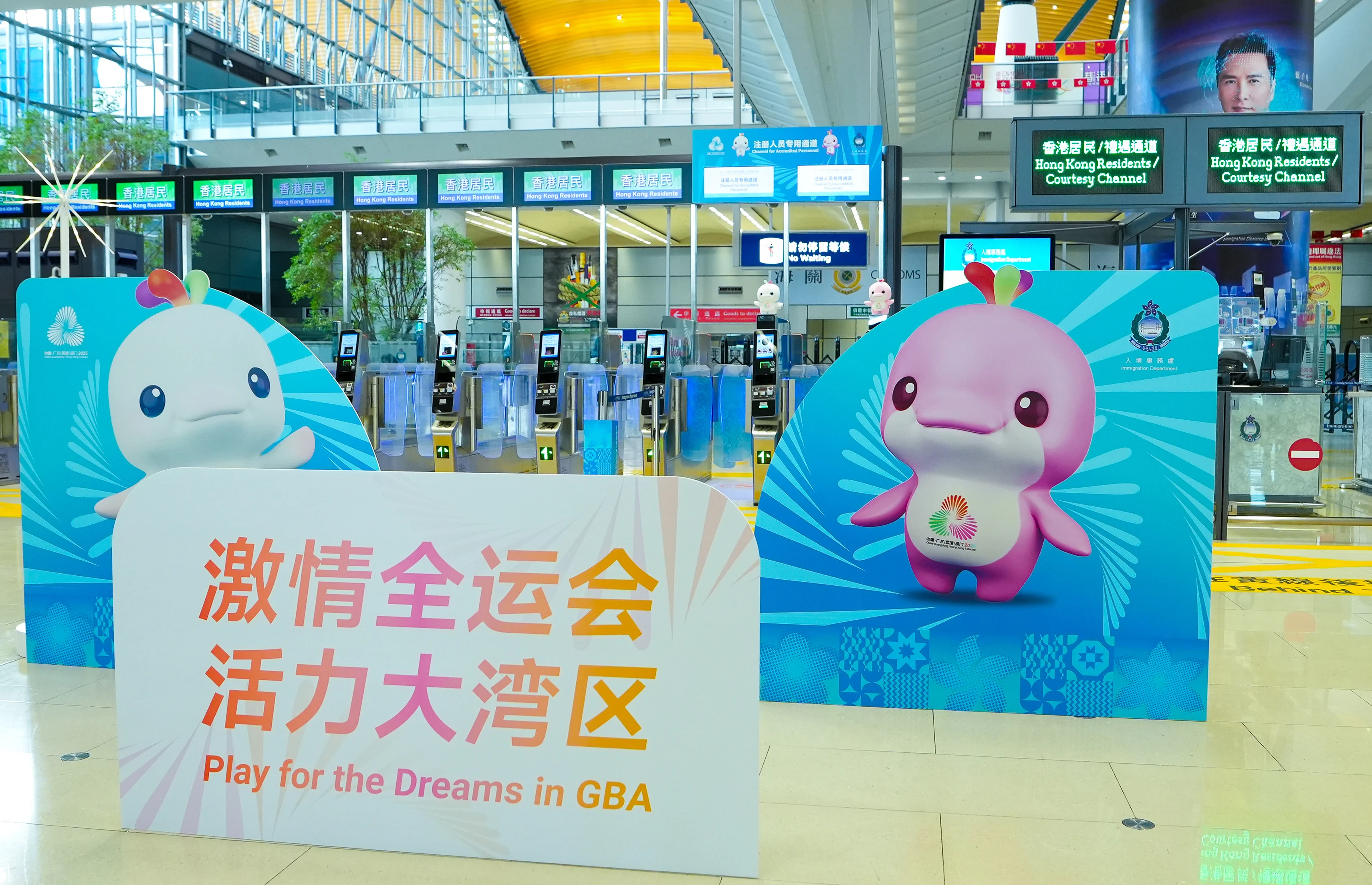Copyright scmp

National Games athletes will be able to enter and depart Hong Kong in seven seconds flat, using 16 dedicated e-channels across four checkpoints, the Immigration Department has announced. This marks the first time visitors will have access to the contactless immigration clearance channels in Hong Kong. Director of Immigration Benson Kwok Joon-fung said on Monday that his department estimated around 5,000 people from various delegations would enter the city via these dedicated clearance lanes during the Games next month. “Registered athletes and relevant personnel will be able to cross the border without having to use any physical identity document, instead using facial recognition technology [that completes clearance] in seven seconds,” Kwok said. The National Games, to be held between November 9 and 21, will have Hong Kong hosting eight sports – fencing, men’s under-22 basketball, track cycling, golf, men’s handball, rugby sevens, triathlon and beach volleyball. The city will also host segments of cross-border events in men’s road cycling and the marathon. According to the immigration chief, registered athletes and delegation members would be able to use dedicated e-channel clearance lanes at Hong Kong International Airport, the West Kowloon high-speed rail terminus, the Hong Kong-Zhuhai-Macau Bridge and Shenzhen Bay crossing. At each of these checkpoints, two self-service entry lanes and two self-service departure lanes have been reserved specifically for National Games’ personnel, from athletes to technical officials and guests, as of Sunday. Users of the dedicated lanes would have to show their identity documents at the first step of the e-channel upon first use to register their identities, enabling the use of facial recognition to pass the second gate. For subsequent trips, they could use the e-channel to leave or re-enter the city during the National Games simply through facial recognition technology. Local athletes taking part in the Games, as well as their entourages, would also be able to use these dedicated lanes. The arrangement would remain in place till the end of the Games. The contactless process was being provided to visitors during the Games for the first time. Previously, they could use the e-channel only when departing and were still required to present their passports. Wong Kwan-yin, the boundary division commander for vehicles at the Immigration Department, reassured the public that their use of the four immigration checkpoints would not be affected by the dedicated lanes set aside for the Games. “We will monitor passenger flow to open up more counters so as not to affect the clearance process,” Wong said. For the cross-border races, authorities would collect personal data from participating athletes ahead of the competition to compile a list of people authorised to enter the “closed loop” race venue, including travelling in and out of Hong Kong. Wong said immigration officers from the city would be sent as observers to the starting points in Zhuhai for the cycling race and Shenzhen Bay for the marathon, to assist athletes entering the “closed loop” race area. “Only those on the [authorised] “white list” can enter the area,” Wong said. During the races, participants would have to install radio frequency identification equipment onto their vehicles and wear bracelets with GPS sensors to facilitate the “closed loop” management. Athletes and their vehicles would be monitored in real time throughout the races to track their whereabouts and when they have passed border checkpoints.



